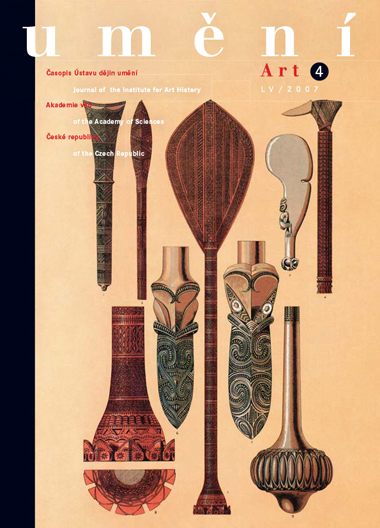Ole W. Fischer
Objected into the Void. Notes on the Polemics of Adolf Loos against Henry van de Velde: a Cultural-Psychological Analysis of Modernity
The protagonists of the modern movement accepted both Adolf Loos and Henry van de Velde as father figures because of their distinguished theoretical reflections on art, architecture and culture, corresponding to their architectural practice which broke with the academic historicism and eclecticism of late 19th century. Van de Velde as well as Loos had helped to reformulate the architectural discipline - and to advance architecture (and industrial design) as the prototypical expression of their time. Hitherto , research and analysis have been concerned with the historic role of each of the two architects: their designs and buildings, their theoretical texts and influences, and, of course, critical revision of the modernists' reductive readings of these. This essay takes a different approach: perhaps the polemic attacks launched by Loos were not so much "spoken into the void" as he allowed his readers (then and now) to believe, but should be evaluated against the background of a larger discourse, in which architecture and culture under modern conditions - had already been introduced. Loos as well as van de Velde take up the threads of the long 19th Century, and in many cases they refer to the same sources, such as Semper, Ruskin or Nietzsche, however dialectically opposed in their readings of these. This study uncovers a strong interrelationship between van de Velde's essays and the counterattacks of Loos, with a close reading of some initial texts that establishes their relationship to earlier debate. Yet, the metaphor of the pivot suggests another possible perspective - and this is the underlying theme of continuous Modernity, i. e. the theory that various aspects of the subsequent architectural discourse of the 20th Century can be identified in the polarity of of Loos and van de Velde: take for example the syntactic linguistic analogy of architecture of the 1960-1980s in the work of Aldo Rossi or Peter Eisenman inscribed in nuce in Loos' reflection on grammar and plan, whereas the idea of an organic, animated architecture became a side branch of High Modernism and has re-entered the scene in the last decade with "architecture non-standard," along with a revived interest in ornament and conceptual art.
Full-text in the Digital Library of the Czech Academy of Sciences:
https://kramerius.lib.cas.cz/uuid/uuid:278f68a8-5f17-4ca2-ad65-1c657f708c4e
< back

